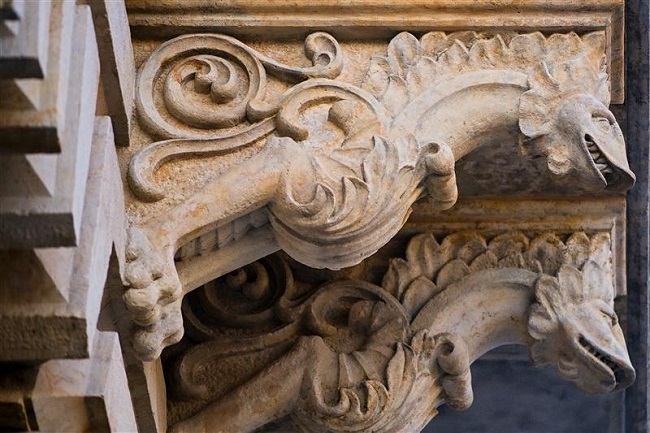
Hořice has a renovated museum with an exhibition on stonemasonry and sculpture
 |
Hořice - The nine-thousand-strong town of Hořice in the Jičín region today opened a renovated museum with a new exhibition on the extraction, processing, and use of sandstone. The renovation of the neo-Renaissance museum building from 1877 cost 28 million crowns and was part of the Czech-Polish project Hořice and the Polish town of Strzegom to support tourism along the Stone Path. The entire project was valued at nearly 60 million crowns, with a European grant from the Interreg program amounting to 46 million crowns. Martin Bártík, the project manager, told ČTK.
The towns of Hořice and Strzegom are about 100 kilometers apart, are partner cities, and share a tradition of stonemasonry. Hořice, which led the Stone Path project, is called the city of stone beauty and is known for the extraction and processing of sandstone. Strzegom is referred to as the Granite Heart of Poland.
The renovation of the deteriorating and modern needs-unfit Hořice museum in Jiří z Poděbrady Square began in 2017 and was the largest construction project of the Stone Path. The grant covered about 20 million crowns of the costs for the renovation and reconstruction of the museum. Originally, the building served as the seat of the district and post office and has been used for museum purposes since the Protectorate.
The museum is now barrier-free after reconstruction, and its internal layout has changed. Visitors to the museum will now find permanent exhibitions depicting the extraction and processing of stone and stone sculpture. The exhibition hall, Štorch's Hall, on the ground floor has been preserved, while a new multimedia room has been created on the first floor of the museum. The previously unused garden of the museum has been transformed by builders into a partially covered outdoor exhibition space with an area for a lapidarium. It can also be used for cultural and social events.
"Previously, about 15 percent of the space in the museum was accessible to the public. The remaining spaces were used as offices, depositaries, or were in a state of disrepair. After reconstruction, 85 percent of the museum's area is accessible to the public," said the deputy mayor Martin Pour (Hořice Patriots) to ČTK. He added that the museum's collection, which consists of about 40,000 items, was moved out of the museum before the reconstruction and is safely stored in the building of the former gymnasium on Husova Street.
In Strzegom, thanks to the Stone Path project, a part of the street in the city center was renovated, creating an outdoor Alley of Sculptures. Strzegom also built a multimedia hall in the Karmel community center, which will, among other things, allow direct connection with the Hořice museum. For example, this could happen during sculpture symposia and stonemasonry events held in both Hořice and Strzegom. A significant component of the project on the Polish side was also the renovation of four baroque fountains in the town of Świdnica, which is located near Strzegom.
As part of the Stone Path project, a network of tourist routes focusing on cultural and natural monuments related to the theme of stone in the Lower Krkonoš and Lower Silesia was also created. "The main goal of the project is to attract more tourists to Hořice, especially for longer stays," said the mayor of Hořice, Aleš Svoboda (Chance for Development). In the Czech Republic, the tourist routes were created in Hořice and Dvůr Králové nad Labem and in the surrounding areas of these towns. In Poland, they are in the towns of Strzegom, Świdnica, and Dobromierz. In addition to marking the routes in the terrain, tourists will have access to maps and other informational materials.
The English translation is powered by AI tool. Switch to Czech to view the original text source.
0 comments
add comment










